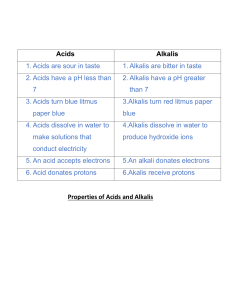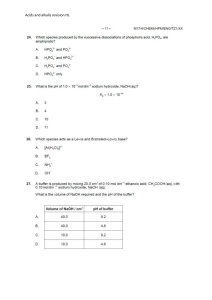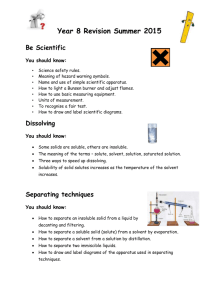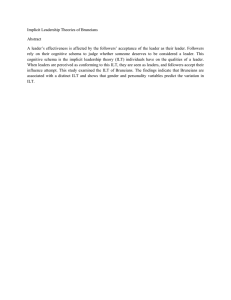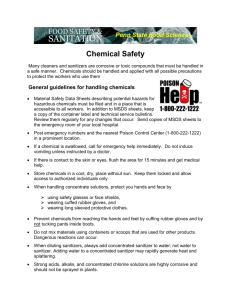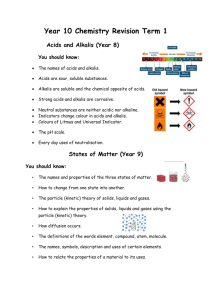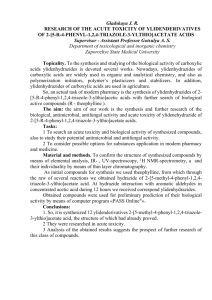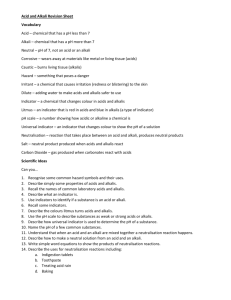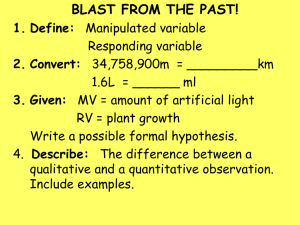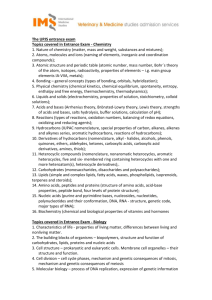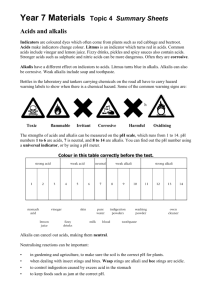year 7 ilt task
advertisement
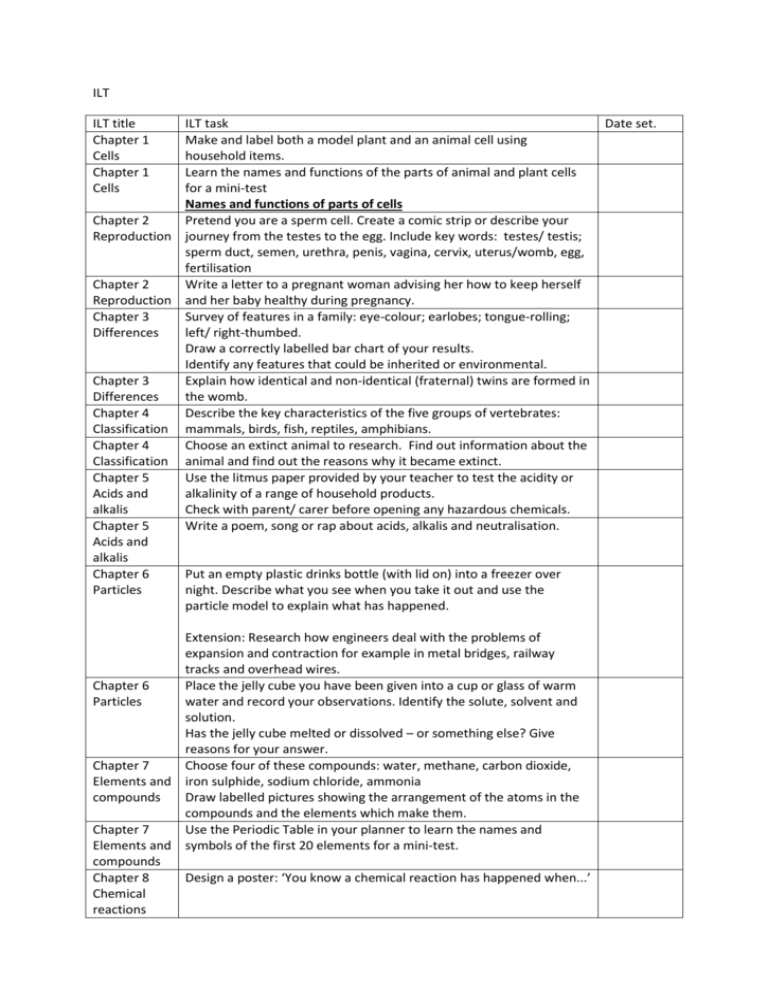
ILT ILT title Chapter 1 Cells Chapter 1 Cells ILT task Make and label both a model plant and an animal cell using household items. Learn the names and functions of the parts of animal and plant cells for a mini-test Names and functions of parts of cells Chapter 2 Pretend you are a sperm cell. Create a comic strip or describe your Reproduction journey from the testes to the egg. Include key words: testes/ testis; sperm duct, semen, urethra, penis, vagina, cervix, uterus/womb, egg, fertilisation Chapter 2 Write a letter to a pregnant woman advising her how to keep herself Reproduction and her baby healthy during pregnancy. Chapter 3 Survey of features in a family: eye-colour; earlobes; tongue-rolling; Differences left/ right-thumbed. Draw a correctly labelled bar chart of your results. Identify any features that could be inherited or environmental. Chapter 3 Explain how identical and non-identical (fraternal) twins are formed in Differences the womb. Chapter 4 Describe the key characteristics of the five groups of vertebrates: Classification mammals, birds, fish, reptiles, amphibians. Chapter 4 Choose an extinct animal to research. Find out information about the Classification animal and find out the reasons why it became extinct. Chapter 5 Use the litmus paper provided by your teacher to test the acidity or Acids and alkalinity of a range of household products. alkalis Check with parent/ carer before opening any hazardous chemicals. Chapter 5 Write a poem, song or rap about acids, alkalis and neutralisation. Acids and alkalis Chapter 6 Put an empty plastic drinks bottle (with lid on) into a freezer over Particles night. Describe what you see when you take it out and use the particle model to explain what has happened. Extension: Research how engineers deal with the problems of expansion and contraction for example in metal bridges, railway tracks and overhead wires. Chapter 6 Place the jelly cube you have been given into a cup or glass of warm Particles water and record your observations. Identify the solute, solvent and solution. Has the jelly cube melted or dissolved – or something else? Give reasons for your answer. Chapter 7 Choose four of these compounds: water, methane, carbon dioxide, Elements and iron sulphide, sodium chloride, ammonia compounds Draw labelled pictures showing the arrangement of the atoms in the compounds and the elements which make them. Chapter 7 Use the Periodic Table in your planner to learn the names and Elements and symbols of the first 20 elements for a mini-test. compounds Chapter 8 Design a poster: ‘You know a chemical reaction has happened when...’ Chemical reactions Date set. Chapter 8 Chemical reactions Chapter 9 Electricity and magnetism Chapter 9 Electricity and magnetism Chapter 10 Energy Chapter 10 Energy Chapter 11 Forces Chapter 11 Forces Chapter 12 Space Chapter 12 Space Learn the word equation for photosynthesis. Identify the reactants and products. Extension: explain how the different parts of the plant are involved in the process of photosynthesis. Use circuit diagrams to explain why the lights in your home are wired in parallel and not in series. Explain the difference between a permanent magnet and an electromagnet. Research some uses of magnets in everyday life. Identify ways in which these energy forms are found or used in your home: Light, thermal, sound, electrical, chemical, gravitational potential, elastic potential. Try to find at least two example of each. Write a diary entry for ‘The Day The Power Workers Went On Strike’. Research and explain in your own words the difference between weight and mass. Extension: Explain why a hammer and feather would reach the surface at the same time if dropped from the same height on the moon. Explain why a lorry is less aerodynamic than a sports car. Find out about the space shuttle your college is named after. When was it first launched? When did it retire? What missions did it complete? Research a planet in our Solar System. Make a factsheet and model. Include information about: Atmosphere; temperature; distance from sun; length of day; length of year.
